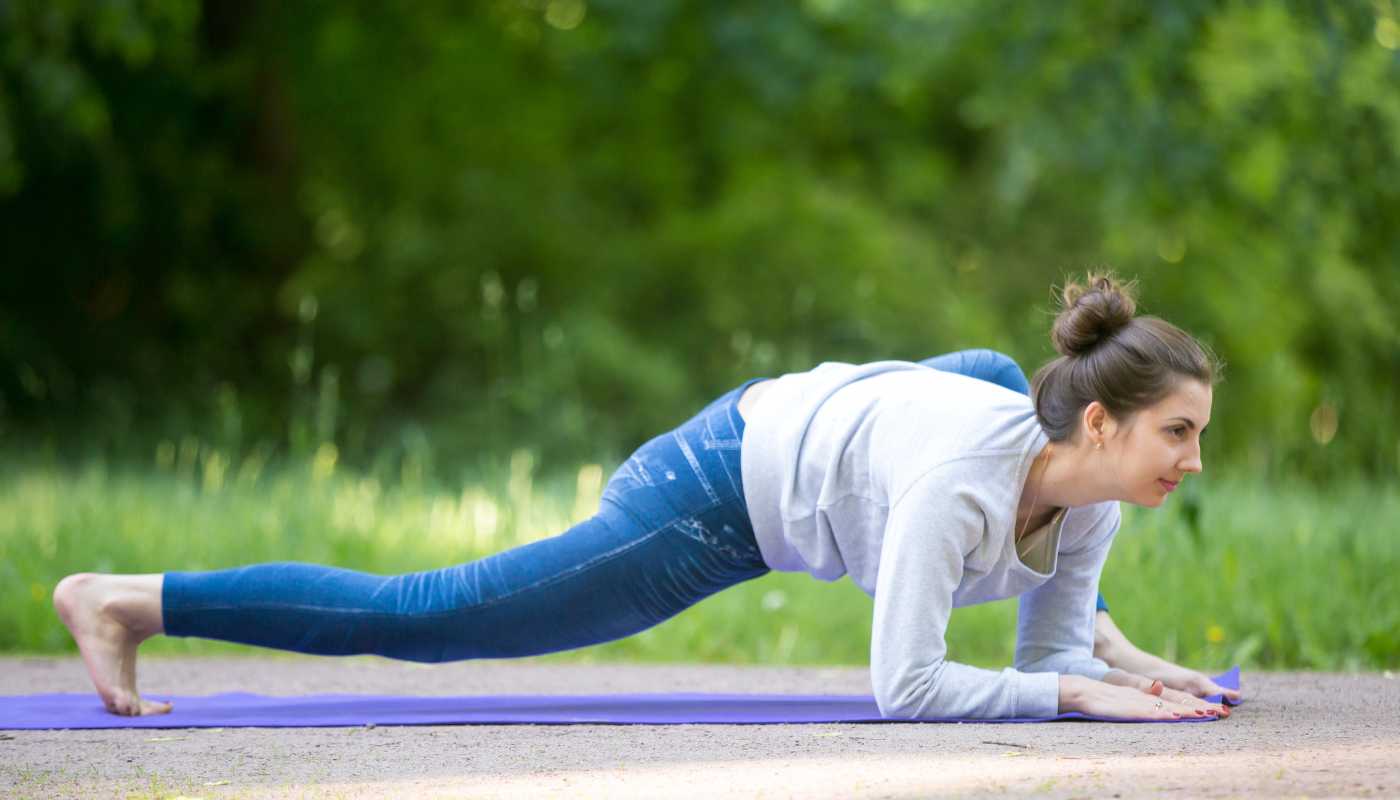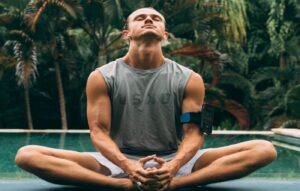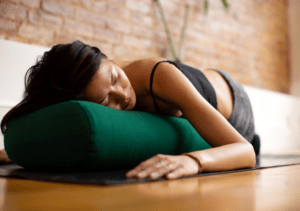Exploring the Benefits and Techniques of Lizard Pose (Utthan Pristhasana)
Within the practice of yoga, which emphasizes the integration of mind, body, and spirit, numerous postures build strength in the physical body while also nourishing the soul. The Lizard Pose, or Utthan Pristhasana, is one such pose that embodies both power and tranquility. This dynamic asana is a great complement to any yoga practice since it provides numerous advantages for mental and physical health. Let’s explore the actions, advantages, and safety measures related to this strengthening pose.
Steps to Practice Lizard Pose (Utthan Pristhasana)
Starting Position: Take a high plank stance, placing your hands firmly on the mat shoulder-width apart and aligning your torso so that your heels and head are in a straight line.
Step Forward: step with your right foot on the outside of your right hand while taking a deep breath. Make sure your right ankle and knee are in line.
Adjustment: Keep your toes untucked as you slowly descend your left knee to the mat. You can choose to support your left knee by placing a blanket or pillow underneath it.
Positioning: As you slowly lower your hips towards the mat, you should feel a strong stretch in your left leg’s inner thigh and groin.
Alignment: Draw your shoulder blades down your back and raise through the top of your head to maintain a neutral spine. To stabilize your lower back, contract your core muscles.
Variations: You can experiment with different ways to do this posture by supporting yourself with your hands on the mat or by lowering your forearms to the floor or blocks for a more intense stretch.
Breathing: Hold the posture for thirty to one minute, taking slow, even breaths. Let all of your body’s tension leave with each exhale.
Switch Sides: Return to a high plank posture by carefully stepping your right foot back to meet your left foot to release. On the other side, repeat the posture.
Benefits of Lizard Pose (Utthan Pristhasana)
Hip Flexibility: To increase flexibility and mobility in the hip flexors, groin, and inner thighs, perform the Lizard Pose.
Strengthens Muscles: By strengthening the glutes, hamstrings, and quadriceps, this pose improves the strength and stability of the legs as a whole.
Stress Relief: By releasing tension and stress held in the lower body and hips, the Lizard Pose helps foster calmness and relaxation.
Digestive Health: This posture’s mild compression of the abdomen promotes digestion and may ease tummy pain.
Energetic Release: Lizard Pose Yoga is thought to release energy by opening the Svadhisthana (sacral) chakra, which is responsible for emotions, sensuality, and creativity. This promotes a feeling of equilibrium and vigor.
Lizard Pose precautions
Knee Safety: To avoid strain or damage, make sure your front knee is directly above your ankle. Use a folded blanket beneath your knee for extra support if you have knee problems.
Listen to Your Body: Recognise the limitations of your body and refrain from forcing yourself into the pose too far. While some discomfort is natural, severe pain should be treated with caution.
Modifications: To support your body and make the posture more accessible, feel free to utilize props like blocks or bolsters.
Avoid Overarching the Back: To prevent tension on the lower back, keep your spine neutral throughout the pose. To support the spine, contract the muscles in your core.
Breathing: Maintain a steady, even breath. Refrain from holding your breath or taking short breaths.
Read More: Learn Yoga in Rishikesh
Adding Lizard Pose to your yoga routine can have a lot of advantages for your body and mind. You can use the transforming potential of this pose to develop strength, flexibility, and inner calm by practicing mindfulness and awareness. Approach this practice, like any other yoga practice, with an open heart, patience, and compassion, and allow the journey to naturally develop on your mat.
Learn to know more about yoga poses so you can join yoga teacher training in india and 200 hour yoga teacher training in rishikesh and aerial yoga teacher training and yin yoga teacher traning




